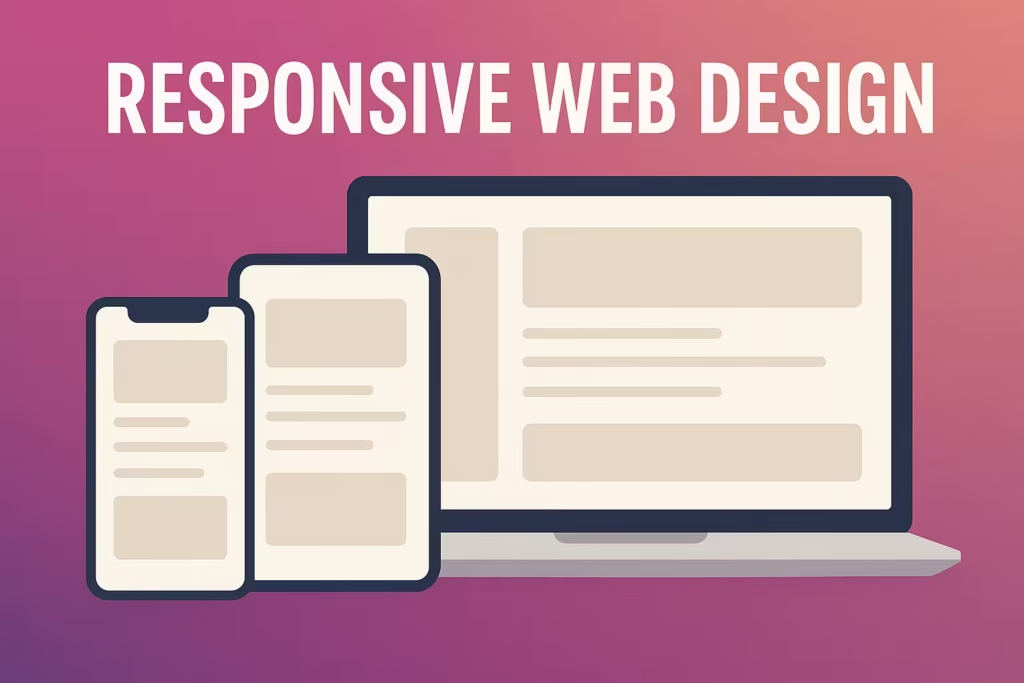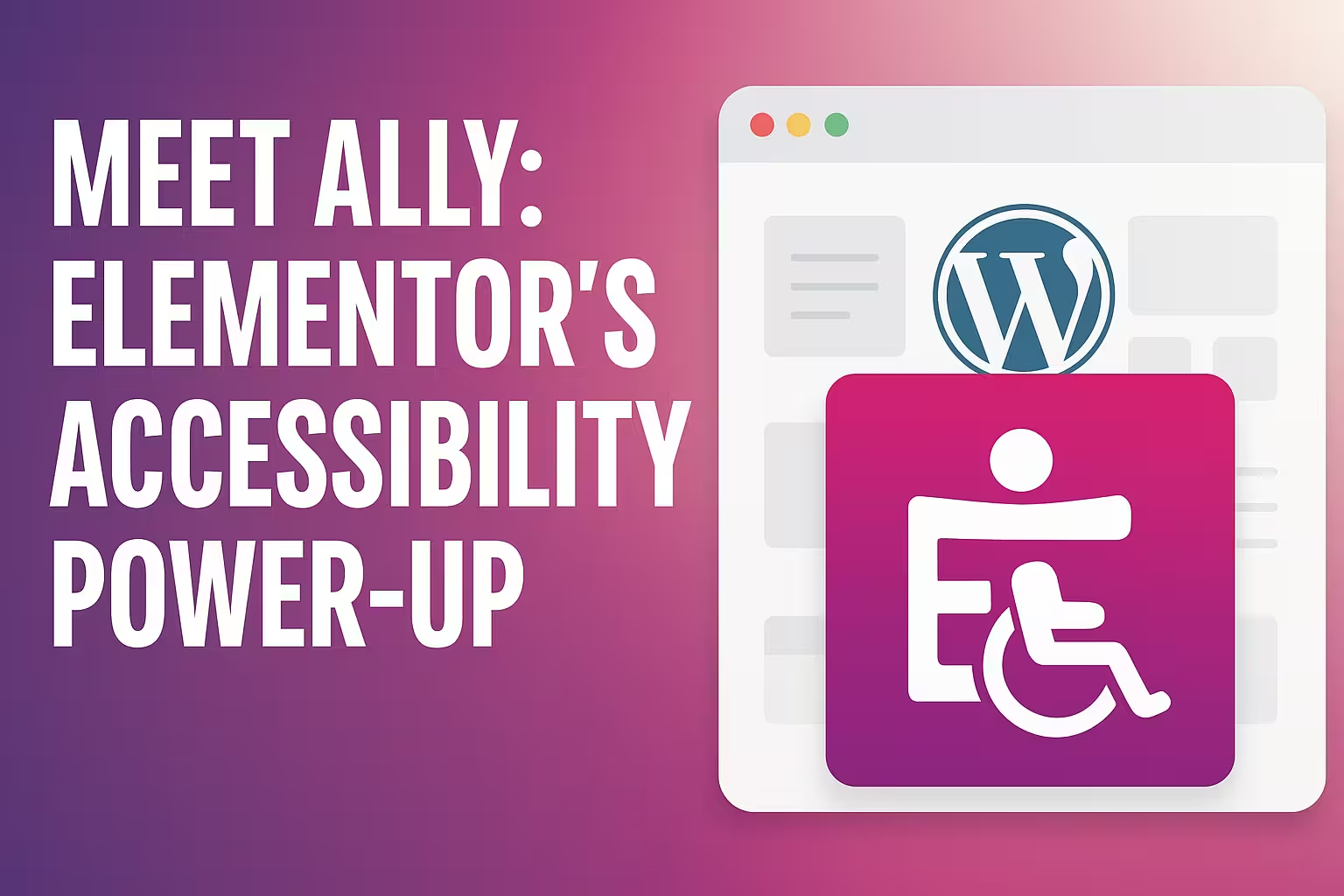Accessibility is becoming a need rather than a luxury. Developing inclusive digital experiences has become a top concern for both companies and creators as a result of laws like the European Accessibility Act and WCAG 2.2 establishing worldwide standards. Presenting the Elementor Ally plugin, a revolutionary accessibility tool for WordPress that improves usability and streamlines compliance. Let’s examine why this technology is essential for Spring 2025.
Why Ally? Bridging the Gap Between Design and Accessibility
Ally is a complete solution made to make accessibility easier for developers, company owners, and online producers. It is more than simply a plugin. Ally offers a simple route to compliance when laws like the WCAG recommendations and ADA requirements become required globally.
It has features like customisable usability settings that let users change the text size, colour contrast, and stop animations without knowing how to code. These characteristics make it easier for those with visual, hearing, or cognitive impairments to access websites.
The following video was created by the Elementor Team.
Why Accessibility Matters
Accessibility is now required by law and ethics; it is no longer optional. Prioritising inclusion on websites not only enhances user experience but also draws in larger audiences and raises search engine results. Tools like Ally are opportune solutions for companies aiming to future-proof their online presence, especially since the European Accessibility Act is scheduled to go into force in 2025.
Limitations and Recommendations
Ally is an effective tool for improving accessibility, but it cannot replace thorough audits or professional advice. Additional steps beyond what the plugin provides might be necessary to fully comply with international requirements. Working together with certified accessibility specialists may guarantee strict compliance with rules.
Key Features: More Than Just a Widget
Fundamentally, the Ally WordPress plugin offers an accessibility widget that enables users to customise their online experience. Here is a sample of some of its most notable features:
| Feature | User Benefit | Compliance Impact |
|---|---|---|
| Text resizing | Adjust font size for low-vision users | Aligns with WCAG 2.2 readability standards |
| Colour contrast modes | Switch between high, light, dark, or grayscale modes for better visibility | Meets AA/AAA contrast ratios |
| Screen reader support | Enhances navigation for visually impaired users (paid plans) | Supports assistive technology integration |
| Accessibility statement | Auto-generates a compliance document to showcase your commitment | Addresses legal requirements like EAA and AODA |
This table illustrates how the customisation options for the Ally plugin strike a compromise between user requirements and legal requirements. To accommodate a range of visual preferences, the Ally plugin’s colour contrast adjustment feature, for example, allows users to switch between high contrast, light contrast, and dark contrast modes.
Customisation Options:
The accessibility widget’s design, including icon size, colour schemes, and screen location, may be customised by site developers using Ally. This guarantees smooth compatibility with any website design.
Instant Accessibility Statement Generator:
Ally’s ability to automatically create accessibility statements that are in line with international standards like WCAG and ADA makes it easier to comply with legal obligations. It is possible to publish these messages directly on WordPress pages.
Enhanced Usability for Visitors:
Visitors may customise their browsing experience with features including font scaling, high contrast settings, greyscale alternatives, and distraction-free reading panels.
Device-Specific Controls:
Ally enables developers to modify widget visibility for desktop or mobile users, guaranteeing a device-specific experience.
Navigation Improvements:
Screen reader users may navigate webpages more easily with the help of tools like link highlighting and improved page structure.
A Closer Look at Ally’s User-Centric Design
The Ally plugin from Elementor is notable for its user-centric design, which combines strong accessibility capabilities with fluid usability to appeal to both site developers and visitors. This method guarantees that websites not only meet accessibility guidelines but also offer a more satisfactory experience to a wide range of users.
The following video provides a first look at it’s key features.
Features for Web Creators
By giving site designers more power, Ally enables them to customise accessibility elements to meet the needs of individual users. For instance:
- Options for Feature Selection: Designers can activate features that are especially useful for users with ADHD or sensory sensitivity, such as hiding animations or adjusting text alignment.
- customising of the Widget: The plugin enables complete customising of the widget’s look, including positioning, icon sizes, and colour schemes. This guarantees that the branding of the website is consistent.
- Device-Specific Controls: To provide a clutter-free experience specific to each platform, creators can toggle whether the widget is visible on desktop or mobile devices.
- Live Preview: Designers may expedite the integration process by seeing in real-time how modifications affect the widget’s functioning.
Benefits for End Users
Visitors benefit from features designed to enhance usability and reduce distractions:
- Reading Mask Feature: By darkening surrounding material, this tool helps users with concentration problems focus on certain text sections.
- Skip to Content Links: By enhancing keyboard navigation, these links increase the accessibility of webpages for those who use assistive technology.
- Distraction-Free Options: For users who want a more streamlined browsing experience, features like halting animations or concealing graphics are available.
Mobile Responsiveness and Aesthetic Consistency
By enabling device-specific controls, Ally shines at responsiveness on mobile devices. When necessary, creators can conceal the widget on desktop or mobile devices, guaranteeing a simplified user experience. Furthermore, the flexibility to alter widget colours and symbols guarantees that accessibility improvements are smoothly integrated into the general layout of the website.
Why Ally Matters
Ally offers an accessible place to start when it comes to compliance with international accessibility standards like WCAG and ADA, which are becoming more and more significant. Although complete adherence to these principles is not guaranteed, it greatly enhances inclusiveness and usefulness. Additionally, because it is free, it is a great option for companies wishing to improve accessibility without spending additional money.
Legal Compliance Made Simpler
The Ally plugin provides a workable option for companies looking to comply with regulations like the European Accessibility Act (EAA) and the Accessibility for Ontarians with Disabilities Act (AODA), as digital accessibility litigation continue to increase. Ally assists in bridging the gap between legal requirements and accessibility by streamlining compliance procedures.
The following video from Flux provides a beginners guide to website accessibility.
Legal Compliance Features
- Accessibility Statement Generator: One of Ally’s standout features is its ability to automatically generate a legally sound accessibility statement, which has become mandatory in many jurisdictions. This feature ensures that website owners can provide transparency about their accessibility efforts without requiring technical expertise.
- Upcoming Accessibility Audit Tool: Ally is set to introduce an Accessibility Scanner, which will identify compliance gaps across websites. This tool will be complemented by a Remediation Wizard, offering step-by-step guidance to address issues manually or automatically. These updates aim to provide businesses with actionable insights for improving compliance.
- WCAG Alignment: The plugin supports adherence to WCAG guidelines, which are essential for meeting global standards like AODA and EAA. WCAG compliance ensures that websites are perceivable, operable, understandable, and robust for users of all abilities.
Why Ally Matters for Legal Compliance
- Websites in Ontario are required to meet the AODA’s WCAG 2.0 Level AA success criterion. Serious fines—up to $100,000 per day for corporations—can be imposed for noncompliance. Ally lowers the risk of non-compliance by offering tools that are in line with these requirements.
- The European Accessibility Act (EAA) requires digital services and goods to be accessible in all EU member states by June 2025. Ally is a proactive way for companies aiming to reach EU consumers to comply with these regulations and stay out of trouble.
Limitations and Recommendations
Ally is a strong starting point for legal compliance, but it does not ensure that accessibility laws will be fully followed. Expert audits are still crucial for spotting subtle problems that automated systems could overlook. Working together with accessibility specialists reduces legal risks and guarantees thorough compliance.
Installation and Customisation: Easier Than You Think
Both novice and experienced web developers may use the Ally plugin since it is surprisingly simple to install and customise. The following summarises how simple it is to get started and customise the plugin to meet your needs:
Installation Guide
- WordPress Installation:
- Navigate to your WordPress admin panel.
- Go to Plugins > Add New.
- Search for Ally-Web Accessibility.
- Click Install Now and then Activate the plugin.
- Elementor Account Connection:
- After activation, connect the plugin to your Elementor account by going to the Web Accessibility section in your WordPress admin panel.
- Follow the prompts to create or link an existing account.
Customisation Options
- Widget Customisation:
- Icon Positioning: Place the widget in any corner of your site or choose a custom location to match your design.
- Icon Size and Color: Adjust the icon size (large, medium, small) and color to align with your branding.
- Sitemap URL: Add a custom sitemap URL to enhance site navigation for users.
- Accessibility Features:
- Feature Selection: Enable or disable specific accessibility features like text size adjustments, high contrast mode, and animation controls.
- Device-Specific Controls: Show or hide the widget on desktop or mobile devices to tailor the user experience.
- Advanced Features (Paid Plans):
- White Labelling: Remove the Elementor logo to fully customise the widget with your brand identity.
- Widget Usage Analytics: Gain insights into how users interact with accessibility features to refine your site’s usability.

Why Ally is Easy to Use
Free and paying choices: Provides organisations in need of more complete solutions with both free basic features and sophisticated paying choices.
User-Friendly Interface: Without requiring a great deal of technical expertise, Ally’s user-friendly design enables rapid setup and customising.
Seamless Integration: Provides site developers with a hassle-free experience by integrating seamlessly with WordPress and Elementor.
The Road Ahead: What’s Next for Ally?
Even more potent capabilities, such as a remediation process for resolving accessibility problems and improved screen reader compatibility, are hinted at in Elementor’s roadmap. Ally’s role in inclusive web design will be further cemented by these upgrades, which will assist developers in staying ahead of laws such as the European Accessibility Act, which is scheduled to go into full effect in 2025.
Final Thoughts: Why Ally Matters in 2025
The Ally WordPress plugin focusses on empathy rather than only obedience. It turns accessibility from a checkbox into a meaningful user experience by giving priority to features like greyscale mode for colour blindness or stop animations for neurodivergent users. Ally fills the gap between technical specifications and practical usability, but no tool can fully replace human-centered design.
Are you prepared to add inclusivity to your website? Discover the benefits of the Elementor Ally plugin now and contribute to the push for a genuinely inclusive website.
For step-by-step guidance, refer to Elementor’s official Ally plugin user guide.



